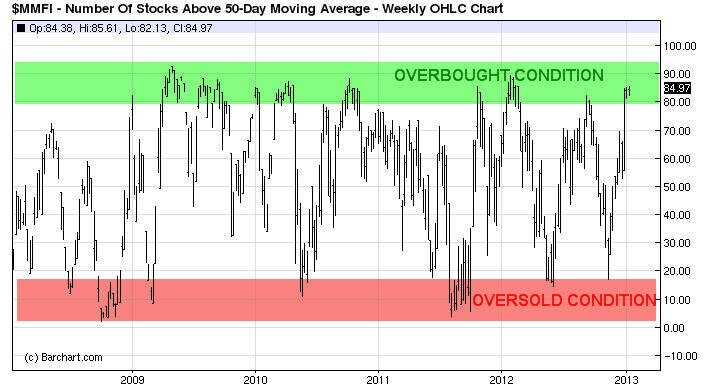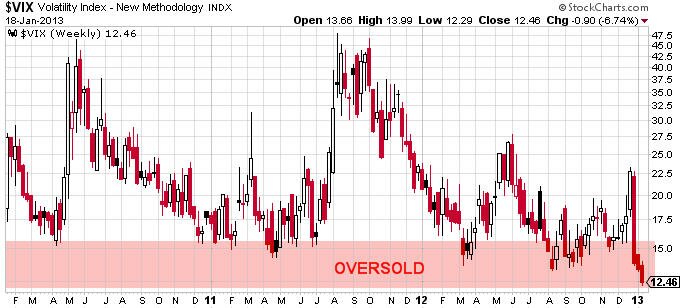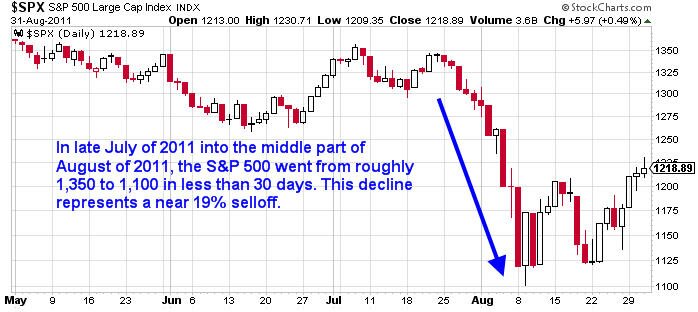The Secret Word: Deflation – And the Next Five Years of Financial Turmoil
By Elliott Wave International
The following is a sample from Elliott Wave International’s new 40-page report, The State of the Global Markets – 2013 Edition: The Most Important Investment Report
You’ll Read This Year. This article was originally published in Robert Prechter’s July 2012 Elliott Wave Theorist.
In the first five months of 2012, there were 20 times as many Google searches on “inflation” as there were on “deflation.” This is down from a ratio of 50 times in June 2008. If any theme has been overdone over the past six years, it is the theme of inevitable inflation if not hyperinflation.
Inflation reigned for 75 years, from 1933 to 2008. People are so used to it that they cannot imagine the opposite monetary environment. Bullish economists have been calling for recovery, which means more inflation, and bearish advisors have been calling for a crash in the dollar, which means hyperinflation. No wonder those are the terms on which most people have been searching.
But only one word allows you to make sense of what’s going on in the world, and inflation is not it. The secret word is deflation.
Deflation explains:
- why interest rates on highly rated bonds are at their lowest levels in the history of the country;
- why the velocity of money is the lowest since the 1930s;
- why huge sectors among investment markets are down over 40%;
- why the Consumer Price Index (CPI) just had its biggest down month since 2008;
- why Europe is in turmoil.
Here are some details: Ten-year Treasury notes pay out less than 1.5% annually, their lowest rate since the founding of the Republic. Treasury bills yield essentially zero, their lowest level ever. The velocity of money failed to rise during the past three years of partial economic recovery, and it recently made new lows. Real estate prices have fallen 45% in the past six years. Commodity prices — as measured by the CRB Index — are down 39% over four years. This group includes oil and silver, two of the most hyped investments of the past decade. Remember in March when articles quoted analysts calling for $5, $6 and $8-per-gallon gasoline? In just three months since then, gas prices have fallen 15%, knocking the CPI into negative territory.
Deflation also explains why European loans are at risk, why Germany is tapped out, why Greeks are protesting in the streets, and why U.S. corporations’ overseas profits are down. Deflation lets you make sense of the world.
What is deflation? Economists define it three different ways, but I find only one definition useful: Deflation is a contraction in the overall supply of money and credit.
Why must deflation occur? Answer: There is too much unpayable debt in the world.
As argued in Conquer the Crash, it ultimately does not matter what the authorities do; they can’t stop deflation. This prediction is being borne out. Since 2007, the Fed has
monetized $2 trillion worth of debt; the federal government has borrowed another $7 trillion; and it has pumped out $1 trillion worth of student-loan credit. Yet real estate and commodities slumped 40% anyway.
These drunken-sailor-type policies have indeed succeeded in nearly maintaining the overall volume of money and credit.
But in the long run you can’t fight a systemic debt overload by piling on more debt. The Fed and the government are shifting the burden of trillions of dollars’ worth of debt obligations from reckless creditors onto innocent savers and hapless taxpayers. The ploy might work if the public’s resources were infinite, but they aren’t. Perhaps this policy temporarily prevented a series of big institutional disasters, but it was only at the ultimate price of a gigantic public disaster.
Such actions have become politically less palatable. Some observers realize that the student-loan program of lending at below-market rates is exactly the model the government used for housing loans, which ended in a spectacular bust. Others know that the government cannot continue to borrow at the current pace and expect to stay solvent. Politicians on both sides of the aisle are tired of the Fed’s bailing out of highly leveraged financial-speculation institutions.
But whether these policies continue or are curtailed is irrelevant to the outcome. If the government slows its borrowing, the overall value of debt will fall. If the government maintains or increases its present pace of borrowing, interest rates will eventually turn up, and the overall value of debt will fall. There is no escape from deflation.
Ironically, investors in the past decade have been doing exactly the opposite of preparing for deflation. Convinced of perpetually rising prices, they have bought every major investment. They chased real estate up to a peak in 2006. They bought blue chip stocks into the high of 2007. They pushed commodities up to a peak in 2008. They chased gold and silver up to highs in 2011. And through spring 2012, they continued to buy stocks and commodities on any rumor that promised inflation: European bank bailouts, Operation Twist, the Greek election, Group-of-8 summits, Fed meetings, Bernanke press conferences, improved economic numbers, predictions of QE3, central-bank interest-rate cuts, you name it. Meanwhile, the U.S. Dollar Index hasn’t made a new low for four years. During deflationary times, cash is king, and by far most investors have chosen to own anything but cash.
Deflation is still not obvious to the majority. Even now, most economists expect continued recovery, mild inflation and a rising stock market. But the essays on deflation.com are 180 degrees apart from conventional thinking. It may be too late for you to get out at the top, but there’s still time to learn how to sidestep the worst of the crunch.
People will be using the secret “d” word much more often over the next five years. By the end of that time, they will also be using its cousin “d” word, depression.

Robert Prechter is the founder and president of Elliott Wave International, the world’s largest financial forecasting firm. The rest of EWI’s 40-page report, The State of the Global Markets – 2013 Edition: The Most Important Investment Report You’ll Read This Year, is available for download. Follow this link to download the full report – for free.
Get Your Free Trading Lessons Now
This article was syndicated by Elliott Wave International and was originally published under the headline . EWI is the world’s largest market forecasting firm. Its staff of full-time analysts led by Chartered Market Technician Robert Prechter provides 24-hour-a-day market analysis to institutional and private investors around the world.


